- Home
- Various Authors
International Speculative Fiction #5
International Speculative Fiction #5 Read online
EPUB edition 2013-12-15
Edited by Roberto Mendes, Ricardo Loureiro, and Nas Hedron
with contributions by The ISF Team
Published by
International Speculative Fiction in association with Hipper Tiger Books and IndieBookLauncher.com
ISBNs:
EPUB edition: 978-1-927624-08-1
Kindle edition: 978-1-927624-09-8
PDF edition: 978-1-927624-10-4
This issue and other ISF issues are available in EPUB, Kindle, and PDF format at InternationalSF.wordpress.com
Copyrights to the pictures, stories, and articles in this e-book are held by their respective authors. This e-book file is provided for your personal use (including one-time printout of the PDF edition). Republishing stories, articles, or images online or in print (including making them available for download or feeding them into peer-to-peer networks) without the explicit authorization of the copyright holder is against the law.
Credits
ISF #5 features the work of:
Francesco Verso
Manuel Alves
Thomas Olde Heuvelt
Nas Hedron
Hunter Liguore
Sean Wright
Sergi Brosa
Saul Bottcher
Editor In Chief: Roberto Mendes
Fiction Editor: Ricardo Loureiro
Non-Fiction Editor: Nas Hedron
Magazine Designer (PDF edition): Ana Ferreira
Slush Readers: Ana Cristina Rodrigues, Ana Raquel Margato, Diana Pinguicha
The ISF Consultant Panel: Ellen Datlow, Paul Di Filippo
Cover Illustration: Sergi Brosa
E-publishing services for EPUB and Kindle editions provided by IndieBookLauncher.com
Cover Design: Saul Bottcher
Copy Editing and Proofreading: Nas Hedron
EPUB/Kindle File Preparation: Saul Bottcher
Table of Contents
Preliminaries
Cover Page
Title Page
Credits
Translation and First Publication Credits
Editorial (Fiction)
Editorial (Non-fiction)
Fiction
Two Worlds (Francesco Verso)
Atomic Heart (Manuel Alves)
The Boy Who Cast No Shadow (Thomas Olde Heuvelt)
Non-Fiction
Around the World (Nas Hedron)
Social Science Fiction (Hunter Liguore)
Review: The Best of Philippine Speculative Fiction 2005-2010 (Sean Wright)
At Home in the Wasteland: The Art of Sergi Brosa (Interview by Saul Bottcher)
Information
About ISF
How to Submit
Meet the ISF Team
About IndieBookLauncher.com
Colophon
Translation and First Publication Credits
Two Worlds
Francesco Verso
Translated by Sally McCorry
First publication in ISF #5
Atomic Heart
Manuel Alves
Translated by the author
First published on Smashwords
The Boy Who Cast No Shadow
Thomas Olde Heuvelt
Translated by Laura Vroomen
First appeared in the Postscripts anthology Unfit For Eden, PS Publishing 2011
Winner of the Paul Harland Prize (Dutch version)
Nominated for a Hugo Award
Honorable Mention, together with Carlos Ruiz Zafón, for the Science Fiction & Fantasy Translation Award (US version)
Social Science Fiction
Hunter Liguore
First publication in ISF #5
Editorial (Fiction)
Ricardo Loureiro
Winter has come again here in the hemisphere where I live! For those who abhor heat and sun and crowded beaches and tourists everywhere it’s the most relaxing time of the year, full of the promise of dark, cold nights.
And every reader knows that dark, cold nights are just perfect for cozying up with some good reading.
So, once again ISF is proud to bring you some of the best speculative/weird fiction around to help you through those nights.
The issue kicks off with Two Worlds by Italian author Francesco Verso, a strange and poignant story of rebirth and renewal on a world that has moved on from the one we know.
And this time my own home country appears in two guises: first by the hand of Portuguese author Manuel Alves in the steampunk-ish Atomic Heart, and second through its special place in the Hugo-nominated The Boy Who Cast No Shadow, by Dutch author Thomas Olde Heuvelt. Coincidentally, both are also beautiful and touching love stories.
So that’s it for this issue. We hope you like it and feel free to drop us a line at our site or on our Facebook page.
—Ricardo Loureiro, Fiction Editor
Editorial (Non-Fiction)
Nas Hedron
Part of ISF’s mandate is to broaden the spectrum of speculative fiction available to readers so that it includes more work from non-traditional sources. But that doesn’t happen in a vacuum—at the same time that we work to reveal the diversity of speculative fiction, we also try to set it in a broader perspective, whether historically, socially, politically, or in some other way.
With that in mind, in this issue we bring you Social Science Fiction by Hunter Liguore. This article takes a tour through socially engaged speculative fiction, from the utopian to the dystopian, from its historical roots to its many modern incarnations. Along the way you’re sure to find new authors and new works you’ll want to explore.
We've also got another set of reviews by Sean Wright, which this issue take us deep into Philippine speculative fiction. Sean will introduce you to a host of authors, some of whom are sure to strike your fancy.
And finally, we have a new feature this time out: an in-depth interview with our awesome cover artist, Sergi Brosa, by our cover designer, Saul Bottcher. Covering topics from anime to French comic books to custom skateboard decks, Saul takes Sergi through his various obsessions, inspirations, and projects, and the discussion includes a detailed dissection of what it takes to mount a Kickstarter campaign.
So enjoy all our excellent stories this issue, but also make time to discover new fiction through our reviews, dig into the culture of speculative fiction with Social Science Fiction, and get to know a rising star in SF art through our cover artist interview. We know you’ll have a blast.
—Nas Hedron, Non-Fiction Editor
Two Worlds
Francesco Verso
Translated by Sally McCorry
“Humans are here today because our particular line never fractured—never at any of the billion points that could have erased us from history.”
—Stephen Jay Gould, Eight Little Piggies: Reflections in Natural History
From the repaired chronicles of Kilimanjaro.
Aruna turned to say good-bye to her parents, opened her arms and lifted them to free the plumage. She stretched out her neck, breathed in deeply, and let her calves lift her. Her torso was exceptionally ample, well suited to supporting her for a long time.
She was about to take off for the Flight from the shelter of the Solar Tree, three metres outside the Shining Corolla. In a line behind her were the faces of many friends, tense, nervous, and distressingly thin.
The song of the Aeromancers, who were arranged in a semicircle for the Ceremony of the Flight, could be so hypnotic as to make you believe anything.
The horizon that called her to maturity flattened into an opaque strip, infested with clouds of ammonia. Below her a 15,000-metre drop plunged down to the static mass of the Global Ocean.<
br />
Old Canderum of the Purple Feathers finished explaining the goal of the Flight for the thousandth time then, solemn and haggard, approached Aruna. He bowed his enormous beak to one side in a gesture of good luck, and stopped singing. With a gentle push to the back of her neck, he cast Aruna into the emptiness.
“Fly, Aruna! Fly towards hope!”
Canderum’s shout announced Aruna’s eighteenth birthday, when for the first time she would leave without having a precise destination.
The young woman dropped, together with another fifteen companions from the Solar Tree Major, and perhaps none of them would ever return. Like everyone else who, year after year, had participated in the Ceremony.
Aruna closed her eyes, folded back her wings to gain speed, altered her trajectory, and let the ascending currents take her westward.
Going back empty handed would be a terrible dishonour.
Mnemonic relic 1 (source uncertain)
Not even the supercomputers had been able to predict that the hybrid genes would react so quickly and fill so many ecological niches. A number of sequences were dramatically defeated in a competition rendered ruthless by human alteration and an evolutional process that had been going on for millions of years.
Other sequences, a tough minority, took advantage of this situation to adapt and, incidentally, evolve into forms of life that, from then onwards, populated the Modified Earth.
The “human race” in the form it presented before the Second Ecopoiesis, no longer existed. In its place there were two races whose DNA shared 99.96% of their genes with the human race, but no longer walked the Earth.
Because they had not discovered intergalactic flight in time to populate new worlds, human beings had discovered a way to bend the barrier of time and conserve their lives for centuries When the human genome was decoded in the Second Millennium, scientists were surprised to find that it consisted of a mere thirty-five thousand genes. They had expected there to be more. Not least, because even a worm had twenty thousand.
So they enriched that sequence—a string of three billion letters formed from an alphabet of four elements, containing the instructions for building and maintaining a human body—with a number of additional codes that would provide some highly desirable qualities: qualities useful for adaptation and survival, values that were commonly found in species other than the human one.
Chimeric experimentation was the beginning of the end; it was when everything became mixed up together. The repeal of the 2005 “Human Chimera Prohibition Act” was approved in accordance with the idea that the principle of human dignity should be applied exclusively to the individual and not generally to the whole species.
Even before chimerism, it was common practice to exchange human cells with animal cells: cows secreted human proteins in their milk, human blood ran through the veins of pigs, and sheep were the recipients of human liver and heart transplants. Vice-versa: many human beings possessed cardiac valves derived from pig and bovine hearts.
Still, the phenomenon that followed chromosomal liberation—known as Genetic Confusion—was also the basis of our salvation.
It was, in fact, demonstrated that there were no true genetic barriers between the many different species, and the proof of this was in the fact that the human genome clearly showed the presence of a genetic continuity between all the animate beings.
The thick, high containment walls that had for millennia kept species separate crumbled within a few decades. The very idea that genes were insurmountable barriers to human adaptability was shown to be unfounded.
The Aeromancers learned to fly and oxygenate their blood better, enabling them to settle on the arid mountain tops. The Aquamancers became glabrous, acquired from fish techniques for obtaining oxygen from water, and populated the seas.
This reconstruction is the result of a research study into how to ensure the survival of animate beings.
From the repaired chronicles of Saxayé.
On the twelfth day of nonstop flying over the Global Ocean, after having travelled 11,000 kilometres without having come across land, or even a log to rest on, Aruna let herself fall, skimming over the surface of the sea. Exhausted, she succumbed to weariness.
Her worn out body, dehydrated and close to death, was intercepted a few hours later by a reconnaissance patrol who had never seen an Aeromancer before, except in the films taken from underwater that they had been shown when they were still at school.
Drawn to the surface by a floating shadow, Karia, Coorny, and Tsai Chin, moved cautiously closer to the creature with feathered arms, and with a beak instead of a mouth: the shape was of an animate, like they were, even though there were evident differences, like the rows of nails on her hands and feet, more like talons than their own webbed fingers and toes.
The bright wings folded behind her arms like drapes were a rainbow of green, yellow, and red stripes, now dirtied with dust and dulled by marine contamination. Keeping away from the slicks of oil, Karia sniffed the stranger and turned to Tsai Chin, the patrol’s leader.
“Do you think we should take her down below?”
“I don’t know, it could be risky.”
The youth’s narwhal-like face looked worried. Although he was quick to act, Tsai Chin thought carefully about every decision.
“But we have to help her... she’s dying.”
The girl’s beak was withered and blackened. In some spots it shone like mercury.
Little Coorny looked towards the horizon and grimaced. Not only was there a storm coming that would generate fire twisters, but his nose could detect the stink of an enemy approaching, closer and closer.
“Quick... that orcark knows exactly what to do with her.”
Hearing their conversation, the girl regained consciousness and opened her beak.
“I’m looking for the Tower... Do you know where the island is? Please... I have to find it, help me.”
Then she was quiet, overcome by her exhaustion.
A big bubble of hydrogen from below reached the group and took them a few metres higher. Karia grabbed hold of the girl.
“What do you think she was talking about?”
“She’s raving, maybe she’s ill.”
Tsai Chin’s prudence had made him head of the team even though he was so young.
“I reckon we should take her down with us. Iguain will know what to do.”
Karia, on the other hand, was naturally curious. Her webbed fingers were expert in investigating coralline encrustations and fields of kelp; she loved swimming with the fish and wandering amidst the iridescent seaweed. Whenever she could, she would set off to look for giant crabs and velvety sponges. She loved the spores, the microbes, and even the viruses.
Life under water was prolific, and she had fun riding rays, flying on the backs of mantas, and drawing with the cuttlefish and octopuses.
“We don’t know her, Karia...”
Tsai Chin blinked his nictitating membranes uncertainly. Then the air valve in his neck vented vigorously. Karia smiled.
“All right then... But you’re going to guard her. Your father will decide her fate.”
Coorny took a breathing kit out of his pouch. Even though they had never taken an Aeromancer back before, they knew what they had to do.
After uncurling the tube, Coorny placed the mouthpiece on the girl’s beak and the oxygenating bands behind her shoulders. The bands’ tiny fissures, acting as artificial gills, would allow the outsider to breathe under water.
The orcark continued to approach with its characteristically comic movements: its head rocking drunkenly. It was probably its hunger that made it look so ridiculous.
The patrol formed a diamond: Tsai Chin in front, Karia and Coorny on each side, and the outsider last, towed by her arms. They dived quickly, heading towards Saxayé: their underwater bubble.
They stretched out their fins and accelerated together.
With bloodshot eyes the orcark, its mouth hanging open expecting to feed, missed it
s prey and resigned itself to going hungry yet again.
Mnemonic relic 2
Though all the entrances to Saxayé were dug in the sand, the tunnels stretched and branched out across the seabed for several kilometres. Air was pumped into the large corridors and the domes through porous walls made of osmotic membranes that absorbed oxygen from the sea water, releasing bubbles of carbon dioxide in the process.
Saxayé was situated close to two hydrothermal vents surrounded by prolific colonies of 5-metre-long tube worms, 50-cm bivalves, and an abundance of prawns and mussels.
It was a complete ecosystem based not on photosynthesis, but chemosynthesis. The hydrothermal vents were the ocean’s alternative to the old power stations. The springs also served to purify the salt water. As the water penetrated the Earth’s crust, it lost minerals, was cleaned, and released back into circulation by the thousands of steaming vents.
It was an incredibly slow process, but the Aquamancers were in no hurry; they preferred efficiency to imbalance.
The supporting structure of Saxayé, anchored to the seabed by stainless steel chains, had made the inflatable city the most economic structure for providing space for the growing population of Aquamancers.
References were found in the distributed memories of the supercomputers to a few populations on the east coast who, mindful of time spent underground during the war, had started to install these structures as temporary dormitories for immigrant labour.
What for the Aquamancers turned out be simple to get up and running again—having access to technology they had found surviving in watertight depots and laboratories—turned out to be disastrous for the Aeromancers.
They had had to find shelter in the few Solar Trees left standing, surviving on inaccessible semi-desert terrain which had resisted the rising levels of the Global Ocean. Forced to live on land that was arid and as hard as rock, their population had remained stable for centuries. This meant, though, that any chance or unforeseen event could easily compromise their survival.

 Lady Ambleforth's Afternoon Adventure by Ann Lethbridge, Barbara Monajem, Annie Burrows, Elaine Golden, Julia Justiss and Louise Allen
Lady Ambleforth's Afternoon Adventure by Ann Lethbridge, Barbara Monajem, Annie Burrows, Elaine Golden, Julia Justiss and Louise Allen Gods & Mortals
Gods & Mortals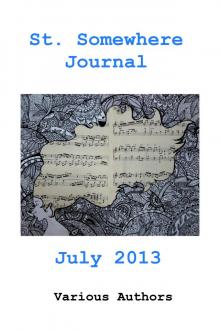 St. Somewhere Journal, July 2013
St. Somewhere Journal, July 2013 firstwriter.com First Short Story Anthology
firstwriter.com First Short Story Anthology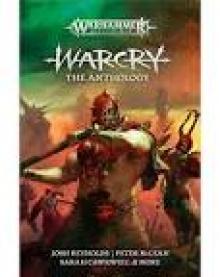 Warcry: The Anthology
Warcry: The Anthology Sacrosanct & Other Stories
Sacrosanct & Other Stories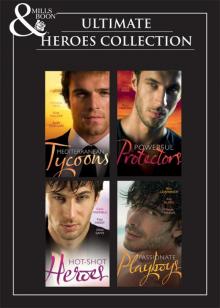 Ultimate Heroes Collection
Ultimate Heroes Collection Cthulhu Deep Down Under Volume 2
Cthulhu Deep Down Under Volume 2 Erotic Classics II
Erotic Classics II Dynasties: The Elliotts, Books 1-6
Dynasties: The Elliotts, Books 1-6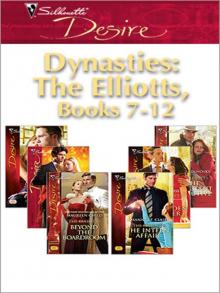 Dynasties:The Elliots, Books 7-12
Dynasties:The Elliots, Books 7-12 International Speculative Fiction #4
International Speculative Fiction #4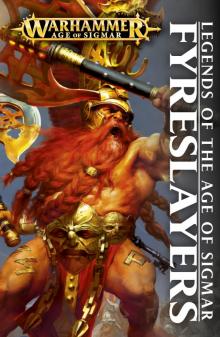 Fyreslayers
Fyreslayers One Night In Collection
One Night In Collection Mortal Crimes 2
Mortal Crimes 2 Some of the Best from Tor.com
Some of the Best from Tor.com Howl & Growl: A Paranormal Romance Boxed Set
Howl & Growl: A Paranormal Romance Boxed Set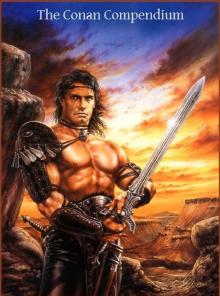 The Conan Compendium
The Conan Compendium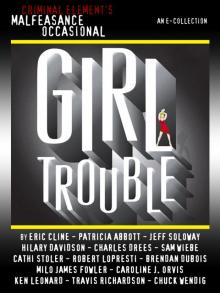 The Malfeasance Occasional
The Malfeasance Occasional Brides of Penhally Bay - Vol 4
Brides of Penhally Bay - Vol 4 Brides of Penhally Bay - Vol 2
Brides of Penhally Bay - Vol 2 Brides of Penhally Bay - Vol 1
Brides of Penhally Bay - Vol 1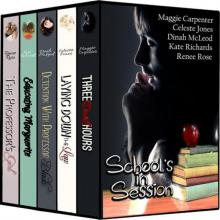 School's in Session
School's in Session International Speculative Fiction #5
International Speculative Fiction #5 Erotic Classics I
Erotic Classics I Legends: Stories in Honor of David Gemmell
Legends: Stories in Honor of David Gemmell Mortal Crimes 1
Mortal Crimes 1 The Classic Children's Literature Collection: 39 Classic Novels
The Classic Children's Literature Collection: 39 Classic Novels Don't Read in the Closet volume one
Don't Read in the Closet volume one Some of the Best from Tor.com: 2014: A Tor.Com Original
Some of the Best from Tor.com: 2014: A Tor.Com Original The Fitzwarren Inheritance
The Fitzwarren Inheritance All Things Zombie: Chronology of the Apocalypse
All Things Zombie: Chronology of the Apocalypse Hammer and Bolter - Issue 12
Hammer and Bolter - Issue 12 Kiss Kiss
Kiss Kiss Dog Stories
Dog Stories Bad Blood Collection
Bad Blood Collection